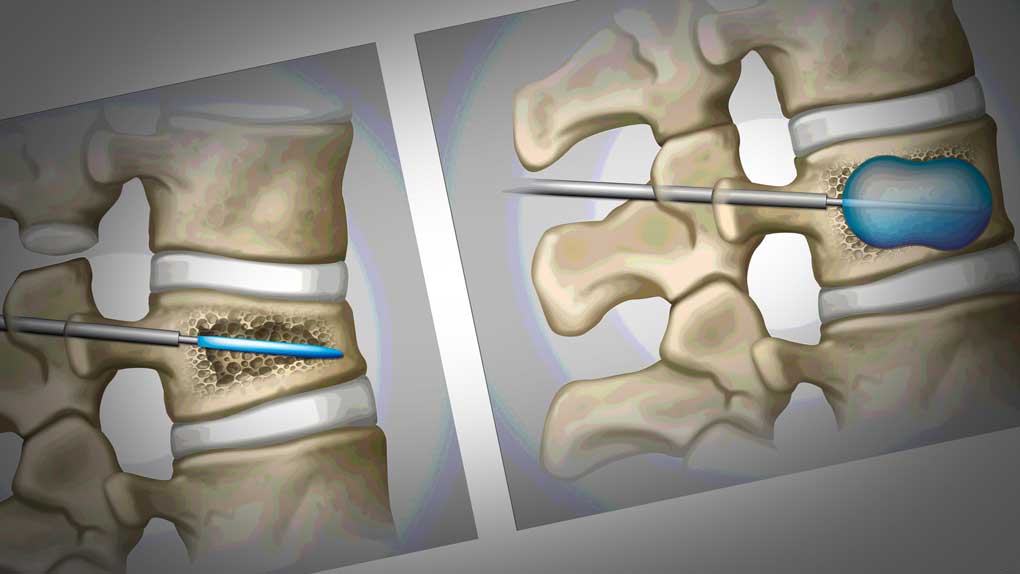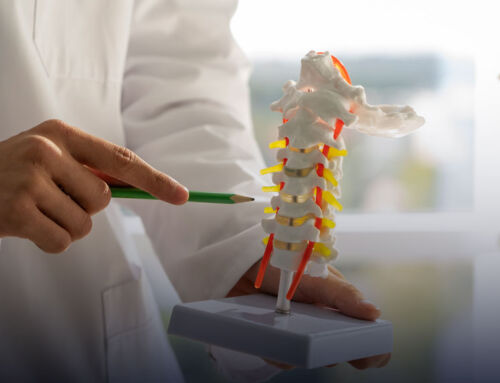Compression Fracture Treatment with Kyphoplasty
Compression fractures occur in your vertebrae when the bone density is no longer enough to support the weight of your spine. This condition often occurs as a result of aging, injury, or osteoporosis. The vertebrae in the spine can develop cracks and fractures over time, resulting in lingering pain and lost height.
Veterbral augmentation was developed in 1984 to reduce pain and loss of function from vertebral compression fractures. Prior to the invention of vertebral augmentation, patients suffering from compression fractures had only the option of bed rest until the bones healed and the pain subsided.
There are two types of vertebral augmentation – Vertebroplasty and Kyphoplasty. These minimally invasive procedures can provide rapid relief from the pain of compression fractures, and patients undergoing these treatments are typically able to resume normal activity in the same day.

Vertebroplasty for Spinal Compression Fractures
Vertebroplasty involves injecting a cement-like substance directly into the compression fractures, which stabilizes the bone and can immediately decrease the pain resulting from the fracture. This procedure is percutaneous (minimally-invasive), requiring only a local anesthetic at the area of the needle insertion. The procedure normally takes an hour, and patients can return home on the same day.
Kyphoplasty for Spinal Compression Fractures
Kyphoplasty is similar to vertebroplasty. The primary difference with Kyphoplasty is it involves a first step of inflating a small balloon (the KyphX Inflatable Bone Tamp) into the fractured area. The balloon expands the vertebrae to resume most of its original size and shape prior to the fracture. After space is created in the vertebrae, a cement-like substance is injected to fill the void and stabilize the bone.
Many patients get pain relief immediately after the procedure, while it may take a few days for others. Overall, normal activities can be resumed, but heavy lifting or any unnatural twisting/bending should be avoided for at least six weeks. As with any procedure, please consult your physician regarding your remaining course of treatment, especially if osteoporosis was the cause of the fracture.
Generally, the earlier the procedure of kyphoplasty is performed, the better the chances of achieving significant correction of spinal alignment. Factors influencing early intervention with kyphoplasty (within the first two weeks of the fracture) include:
- Severe pain that is poorly controlled with pain medication
- Severe functional limitations such as inability to stand or walk
- Fractures with greater loss of height and angular deformity
- Fractures with progressive collapse
- Fractures located at the thoraco-lumbar junction (the area of the spine between the lumbar spine and the rib cage)
- Multiple fractures (including a new fracture in a patient who has old healed compression fractures).
Kyphoplasty may be an option if conservative treatments are not providing positive results and pain relief from a spinal fracture. To learn more about this procedure, or schedule a consultation with one of our board certified physicians, call us today.


